22 Unique Mochi Varieties You’ll Want to Taste
Mochi, a delightful Japanese delicacy, captivates taste buds with its unique texture and versatile nature.
Soft, chewy, and endlessly adaptable, these delectable treats have charmed food lovers worldwide.
Rice flour transforms into a magical culinary canvas, allowing endless creativity and flavor combinations.
Cultural traditions blend seamlessly with modern gastronomy, making these bite-sized wonders irresistible to both adventurous and classic palates.
Smooth, pillowy exteriors conceal surprising fillings that range from sweet to savory, promising unexpected sensory experiences.
Skilled artisans craft each piece with meticulous attention, transforming simple ingredients into edible art.
Passionate food enthusiasts appreciate the delicate balance of technique and imagination required to create these remarkable confections.
Your culinary journey awaits through 22 signature mochi varieties that showcase extraordinary craftsmanship and flavor innovation:
Signature Mochi Varieties for Sweet Snacking
Mochi delights with its chewy texture and playful flavors, classic red bean, fresh fruit, and even chocolate. Find out which varieties are the new favorites.
Ichigo Daifuku
Ichigo daifuku are delectable Japanese sweets featuring whole strawberries nestled inside soft, stretchy mochi rice dough.
Sweet red bean paste (anko) carefully wraps the strawberry before being encased in a thin, white mochi shell.
Originating from traditional daifuku desserts, these treats combine chewy glutinous rice textures with fresh fruit flavors.
Japanese confectioners craft each piece with precise techniques passed through generations.
Strawberry selection matters critically, with ripe, vibrant fruits chosen to balance sweetness and tartness.
Soft mochi provides a smooth, elastic exterior that contrasts beautifully with the fruit's juicy interior.
Seasonal availability makes ichigo daifuku particularly special during spring strawberry harvests.
Small yet elegant, these sweets represent a perfect harmony of traditional Japanese dessert craftsmanship and modern fruit-filled innovations.
Daifuku
Daifuku are classic Japanese sweet rice cakes wrapped in soft, stretchy mochi and filled with smooth sweet bean paste.
Japanese confectioners craft these delicate treats by carefully pounding glutinous rice into a tender, chewy outer shell that encases rich fillings like traditional red bean paste (anko).
Small round balls showcase different pastel colors including pink and green, making them visually appealing desserts.
Mochi preparation requires intense manual labor, involving boiling and crushing rice to create the signature elastic texture.
Street vendors and traditional sweet shops across Japan sell these popular treats during festivals and everyday celebrations.
Modern variations now include strawberry, chocolate, and cream fillings that appeal to younger generations.
Regional bakeries continue experimenting with innovative flavor combinations that honor the dessert's centuries-old culinary tradition.
Warabimochi
Warabimochi are delicate Japanese jelly-like sweets crafted from bracken starch, offering a uniquely cool and chewy summer treat.
Originating before the Heian era, these traditional delicacies were even favored by Emperor Daigo.
Japanese locals particularly enjoy warabimochi in the Kansai region during warm months.
Sweet toasted soybean flour called kinako coats the translucent dessert, enhancing its flavor profile.
Bracken starch comes from warabi, a wild plant growing near riverside areas.
Harvested in late winter, these ingredients create a refreshing confection.
Rivers and mountain regions provide the perfect environment for gathering warabi.
Emperor Daigo's historical fondness highlights the dessert's long-standing cultural significance.
Sakuramochi
Sakuramochi are delicate Japanese spring sweets symbolizing cherry blossoms through their soft pink color and distinctive presentation.
These rice cakes feature sweet red bean paste wrapped in a tender mochi shell and adorned with a salty preserved cherry blossom leaf.
Japanese dessert lovers traditionally enjoy sakuramochi during spring, celebrating the brief cherry blossom season.
Origins trace back to 1717 in Edo, when a guard named Yamamoto Shinroku first created the treat using leaves from Sumida River trees.
Sweet and slightly salty flavors blend harmoniously in each bite.
Sakuramochi represent a perfect balance between visual beauty and complex taste.
Cultural significance connects these sweets deeply to Japanese seasonal traditions.
Yatsuhashi
Yatsuhashi are delicate Japanese sweets originating in Kyoto with a unique triangular shape inspired by a traditional koto musical instrument.
These soft, thin rice flour confections celebrate centuries of Japanese culinary artistry and cultural heritage.
Baked or unbaked versions offer different textures and flavors, with cinnamon being a classic filling option.
Kyoto's historic confectionery tradition shines through each carefully crafted sweet, typically served alongside green tea.
Traditional recipes connect modern consumers to Kengyo Yatsuhashi, the legendary musician who inspired the treat's name and design.
Soft mochi-like textures and subtle sweetness make these treats a beloved Japanese delicacy.
Kusa Mochi
Kusa mochi are traditional Japanese sweets bursting with deep green color and unique mugwort-infused flavor.
Glutinous rice flour creates their signature sticky texture and distinctive appearance.
Springtime celebrations often highlight these green treats as seasonal delicacies.
Mugwort paste gives them an earthy, herbal taste that sets them apart from other mochi varieties.
Skilled Japanese confectioners carefully prepare these treats with precision and cultural significance.
Fillings like sweet red bean paste can enhance their complex flavor profile.
You might find kusa mochi served during special festivals and family gatherings.
Soft and chewy, these green morsels represent a delightful connection to Japanese culinary traditions.
Kinako Mochi
Kinako mochi showcases traditional Japanese dessert artistry through sweet glutinous rice cakes coated in roasted soybean powder.
Rice cakes derive from pounded glutinous rice and transform into soft, chewy treats with a distinctive nutty flavor.
Preparing mochi requires careful technique, with most people opting for pre-packed kiri mochi versions to simplify cooking.
Cooks typically boil or toast the rice cakes before dipping them briefly in water to help kinako powder adhere perfectly.
Sugar mixed with roasted soybean powder creates a delicate coating that balances the mochi's natural sweetness.
Japanese households enjoy these treats during special occasions and seasonal celebrations.
Kinako powder provides a rich, earthy undertone that complements the mochi's soft texture.
Serving temperature can vary from warm to room temperature, depending on personal preference.
Botamochi
Botamochi are traditional Japanese rice balls wrapped in sweet azuki bean paste, uniquely shaped to mirror delicate tree peony flowers.
Rice glutinous in nature forms the core of these seasonal treats, carefully molded and coated with smooth red bean paste.
Spring marks botamochi's primary season, while autumn brings ohagi, a nearly identical confection named after bush clover.
Japanese families prepare these sweets during seasonal festivals and cultural celebrations.
Rice is pounded and shaped into round balls, then completely covered in finely ground azuki paste.
Some variations include rolling the rice balls in roasted soybean powder or sesame seeds for added texture.
Cultural significance runs deep in these simple yet elegant rice desserts.
Seasonal traditions connect generations through this sweet, symbolic treat.
Mame Daifuku
Mame daifuku are traditional Japanese sweets blending soft mochi with sweet fillings, originating during Japan's Edo period.
Sweet rice cakes wrap around smooth azuki bean paste or whole soybeans, creating a delicate texture that melts in you mouth.
Compact and portable, these treats typically accompany green tea ceremonies and morning social gatherings.
Japanese households often prepare mame daifuku fresh to ensure maximum flavor and softness.
Subtle sweetness and chewy consistency make them popular across generations.
Seasonal variations include different bean fillings and decorative garnishes.
Small yet significant, mame daifuku represent a cherished part of Japanese confectionery culture.
Kuzumochi
Kuzumochi are translucent Japanese dessert jellies crafted from pure kuzu root starch, delivering a delicate, cooling summer treat.
Soft and wobbly, these light sweets emerge from dissolving kuzuko powder in sweetened water and setting the mixture in smooth molds.
Japanese kitchens traditionally prepare this refreshing dessert using natural ingredients from the native kuzu plant.
Roasted soybean powder and brown sugar syrup enhance the dessert's mild, subtle flavor profile.
Each pale, gelatinous bite provides a cool relief during warm seasons.
Minimal ingredients and simple preparation make this treat accessible to home cooks.
Kuzu root's medicinal properties add potential health benefits to this sweet, transparent delicacy.
Kashiwa-Mochi
Kashiwa-mochi are traditional Japanese rice cakes symbolizing strength and renewal during Children's Day celebrations.
Sweet red bean paste nestles inside soft, chewy rice dough that gets carefully wrapped in fragrant oak leaves.
Japanese families traditionally serve these treats on May 5th to honor children's growth and potential.
Oak leaves impart a distinctive earthy aroma without being eaten, adding complexity to the mochi's delicate texture.
Rice cake makers carefully craft each mochi by hand, maintaining generations-old techniques.
Seasonal significance marks these treats as more than simple desserts.
Oak leaf wrapping represents samurai warrior traditions of perseverance.
Families share these meaningful sweets as symbols of hope for young generations.
Zunda Mochi
Zunda mochi represents a classic Japanese sweet dessert featuring smooth green edamame paste spread over soft rice cakes from Sendai's Tohoku region.
Mochi gets boiled and coated with bright green edamame puree made from fresh soybeans ground into a creamy mixture.
Regional cooks carefully mash edamame into a rich paste with subtle sweetness and nutty undertones.
Japanese families traditionally enjoy zunda mochi as a summer treat during seasonal festivals.
Sweet green paste provides a unique texture contrast against chewy rice cake base.
Edamame beans deliver essential nutrients and protein to this simple dessert.
Traditional preparation involves grinding fresh soybeans into smooth consistency.
Shio Daifuku
Shio daifuku are Japanese rice cake sweets with a unique sweet-savory profile that sets them apart from traditional desserts.
Japanese confectioners craft these delicate treats by wrapping soft, stretchy mochi around lightly salted red bean paste, creating a complex flavor balance.
Rice flour creates the signature chewy exterior that hugs the smooth anko filling.
Salt transforms the standard sweet bean paste into a more nuanced ingredient.
Mochi's glutinous texture provides a satisfying mouthfeel that contrasts with the creamy interior.
Originating in Japan, these small desserts blend traditional techniques with innovative seasoning.
Salt remains the key ingredient that elevates this unassuming rice cake from simple to extraordinary.
Akafuku
Akafuku is a unique Japanese sweet featuring soft mochi wrapped in smooth red bean paste, exclusively crafted in Ise City's central region of Mie Prefecture.
Inverting traditional wagashi preparation methods, this distinctive confection places sweet koshi-an paste on the outside of the rice cake instead of inside.
Akafuku's smooth texture and delicate balance create a memorable treat that reflects regional culinary traditions.
Mochi's soft rice base provides a gentle foundation for the rich red bean coating.
Careful preparation involves precisely spreading sweet paste around the compact rice cake.
Regional specialization ensures authentic production techniques remain consistent.
Visitors to Ise often seek this specialty as a meaningful souvenir.
Japanese sweets enthusiasts prize akafuku for its innovative design and traditional ingredients.
Kurumi Mochi
Kurumi mochi blends soft, chewy mochi rice cakes with a rich walnut sauce originating in Japan's Iwate Prefecture.
Regional bakers carefully craft these sweet treats by first preparing sticky rice cakes that become pillowy when toasted or soaked in water.
Traditional preparation involves coating the warm mochi with a creamy walnut paste that adds depth and nutty complexity to each bite.
Iwate Prefecture residents have enjoyed this dessert for generations, passing down techniques from family to family.
Walnut sauce provides a smooth, slightly sweet complement to the dense rice cake texture.
Modern versions often use pre-packaged mochi for convenience, though authentic methods remain cherished.
Regional festivals and home kitchens continue celebrating this simple yet satisfying dessert.
Small batches preserve the authentic flavor and cultural significance of kurumi mochi.
Kagami Mochi
Kagami mochi are festive Japanese New Year rice cakes stacked in two layers with symbolic spiritual significance, representing prosperity and good fortune for the upcoming year.
Traditional preparations feature two mochi discs of different sizes, carefully decorated with a mandarin orange, colorful papers, dried kelp, and ferns.
Japanese families display these special rice cakes until kagami biraki, a ceremonial event meaning "opening the mirror" typically celebrated on January 11.
Spiritual beliefs suggest a good luck ghost resides within the mochi, promising blessings for the new year.
Breaking the mochi, always by hand or wooden hammer and never by cutting, follows strict cultural customs.
Ritual breaking transforms the decorative item into culinary ingredients for traditional dishes like zenzai and zoni.
Families consider this practice essential for inviting positive energy and maintaining cultural connections.
Habutae Mochi
Habutae mochi represents silk-inspired Japanese confectionery from Fukui prefecture, featuring an ultra-smooth rice cake with a distinctive rectangular shape crafted from steamed rice flour, sugar, and syrup.
Silk manufacturers originally developed this delicate sweet as a tribute to their textile heritage.
Regional artisans carefully mix ingredients to create a translucent, paper-thin dessert mimicking the texture of fine silk fabrics.
Traditional preparation involves precise dough handling and cutting techniques passed through generations.
Soft and subtly sweet, habutae mochi melts gently on you palate.
Japanese celebrations and tea ceremonies frequently showcase this elegant treat.
Regional festivals highlight its cultural significance.
Fukui's culinary tradition shines through this unique confection.
Coffee Daifuku
Coffee daifuku combines Japanese mochi's soft, chewy texture with rich coffee cream in a delightful sweet treat.
Japanese pastry shops craft this unique dessert by wrapping soft rice cake around a creamy coffee-flavored center.
Mochi's elastic exterior carefully encloses a smooth filling made with fresh cream and intense coffee flavor.
Some versions incorporate coffee directly into the mochi dough, creating a distinctive brown-colored confection.
Traditional preparation involves carefully stretching and folding rice dough to achieve its signature elastic consistency.
Dessert lovers appreciate the balance between the sticky mochi exterior and the silky coffee cream inside.
Small yet satisfying, coffee daifuku represents an innovative twist on classic Japanese sweets.
Hishi Mochi
Hishi mochi are traditional Japanese diamond-shaped rice cakes symbolizing spring's arrival during hinamatsuri (girl's day) celebrations.
Japanese families craft these layered delicacies with glutinous rice flour, creating three distinct colored sections representing seasonal transitions.
Pink represents spring's blossoming flowers, white signifies winter's purity, and green embodies nature's renewal.
Each layer carries unique flavor profiles including jasmine, water chestnut, and mugwort essences.
Artisans carefully stack these layers to create geometric diamond shapes with precise color gradations.
Rice cake makers press and shape mochi with meticulous attention to cultural significance.
Hinamatsuri ceremonies prominently display these colorful rice cakes as decorative and edible symbols of feminine beauty and seasonal change.
Purin Daifuku
Purin daifuku are luxurious Japanese desserts merging traditional mochi with creamy custard-like pudding.
Japanese confectioners developed this modern sweet by wrapping soft, stretchy mochi around a rich custard center reminiscent of classic creme caramel.
Caramel notes enhance the inner filling, creating a smooth and silky texture.
Mochi's chewy exterior provides a delightful contrast to the smooth custard interior.
Dessert lovers appreciate its innovative blend of textures and flavors.
Originating in Japan, this treat combines traditional techniques with contemporary taste preferences.
Purin daifuku represent a playful twist on classic Japanese sweets.
Ume Daifuku
Ume daifuku are sweet Japanese mochi desserts featuring a unique blend of tangy umeboshi and smooth anko wrapped in a soft, chewy rice cake exterior.
Japanese confectioners carefully select ripe ume, which resemble small apricots with a sharp, sour flavor profile.
Anko paste cushions the intense umeboshi center, creating a complex taste balance between sweet and acidic notes.
Traditional preparation involves carefully coating the pickled ume with sweet red bean paste before encasing the entire mixture in thin, elastic mochi.
Seasonal variations sometimes include different mochi textures or additional garnishes.
Skilled Japanese pastry makers craft these treats with precision and cultural reverence.
Regional recipes can differ slightly depending on local ingredient availability and family traditions.
Hanabiramochi
Hanabiramochi are elegant Japanese New Year rice cakes symbolizing seasonal transitions with their delicate design.
Pink-tinted sweet bean paste nestles inside a thin, translucent rice wrapper that reveals soft pastel colors.
Traditional artisans carefully fold each round cake around a white burdock root stalk extending from its sides.
Meiji era origins connect these treats to important cultural rituals like Hatsugama, the first tea ceremony of the year.
Skilled Japanese confectioners create each mochi with precise techniques passed through generations.
Gentle flavors and beautiful presentation make hanabiramochi a cherished seasonal delicacy.
Subtle pink hues and refined texture distinguish these special New Year sweets from other mochi varieties.
How Do You Store and Serve Different Types of Mochi?
Mochi comes in various forms - fresh, frozen, grilled, or filled - and each type requires specific storage and serving methods
How Do Ingredients Affect the Taste and Texture of Mochi?
The unique taste and texture of mochi come from a careful blend of ingredients, each playing a crucial role in shaping the final experience. From the type of rice flour to the choice of fillings and flavorings, these components work together to create mochi’s signature chewiness and flavor complexity.
These ingredients balance mochi’s distinctive chew with varied flavors and textures.

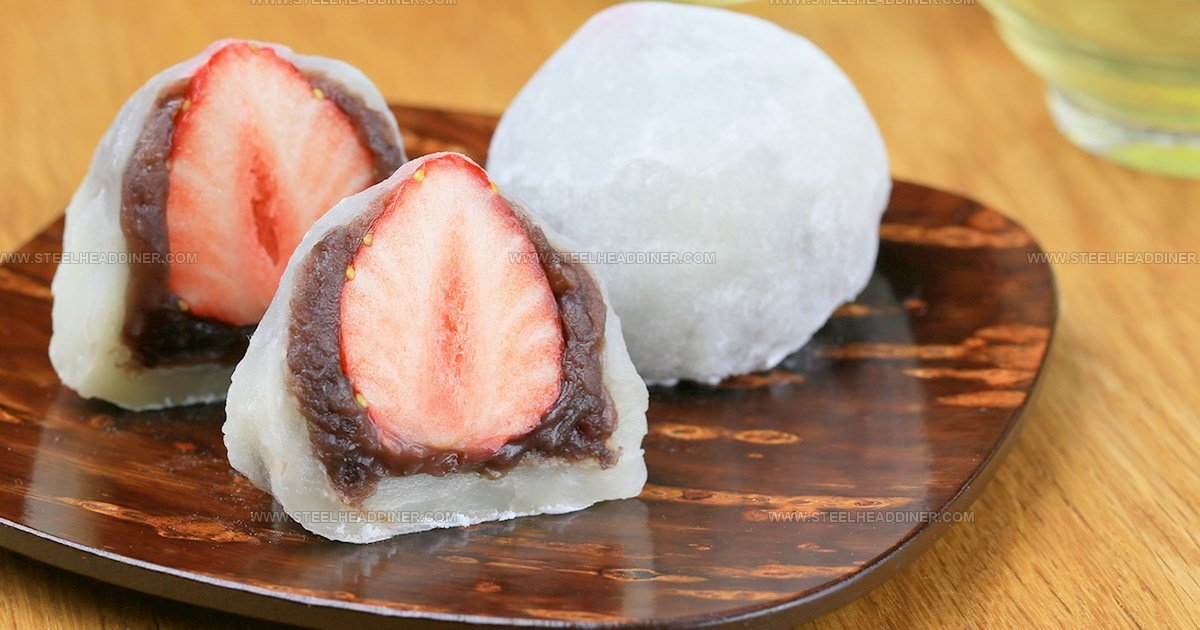
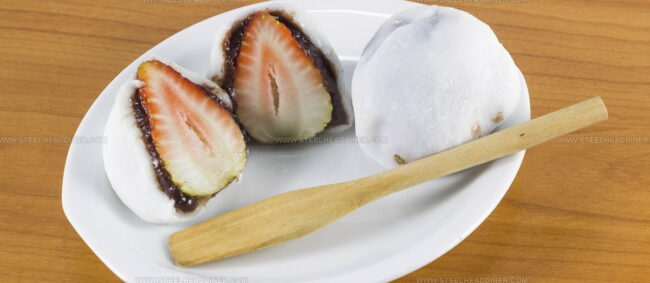

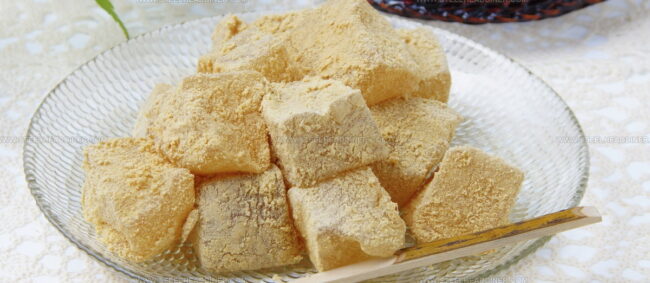
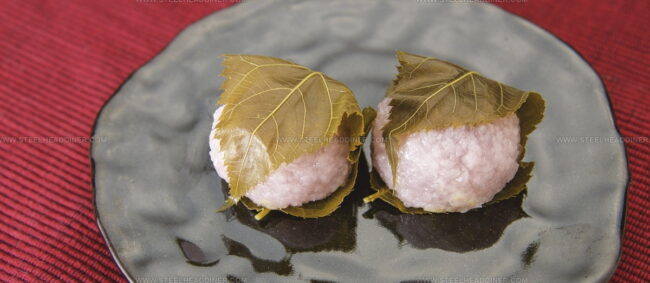
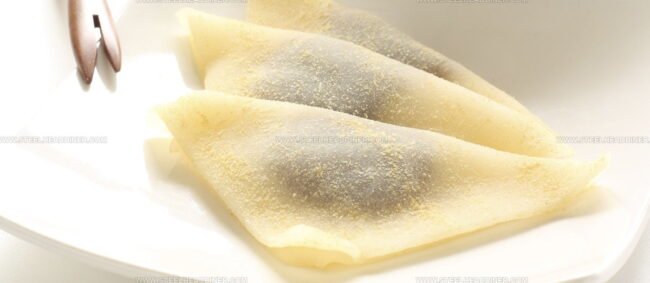
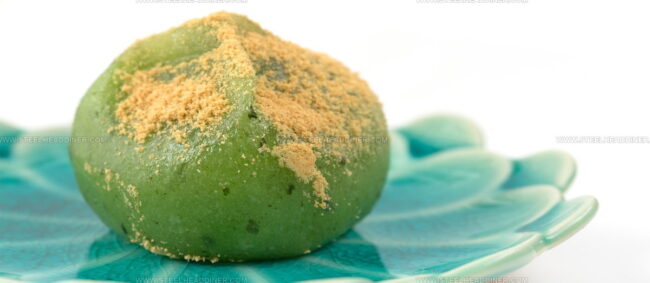
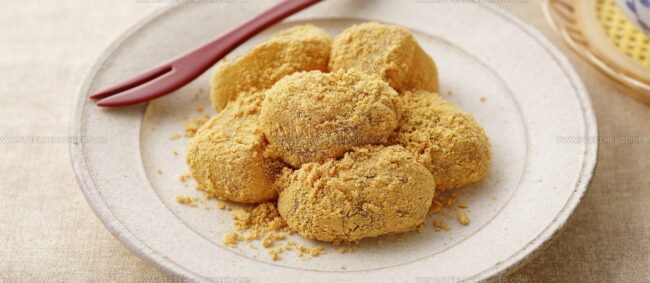
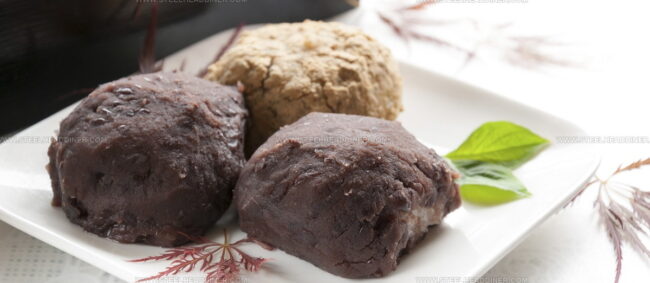

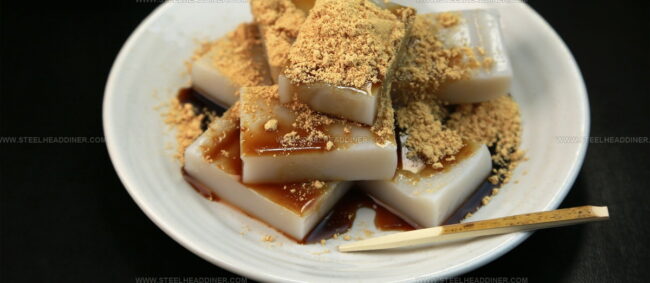
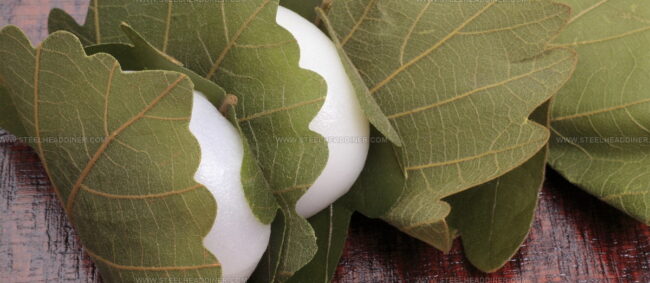
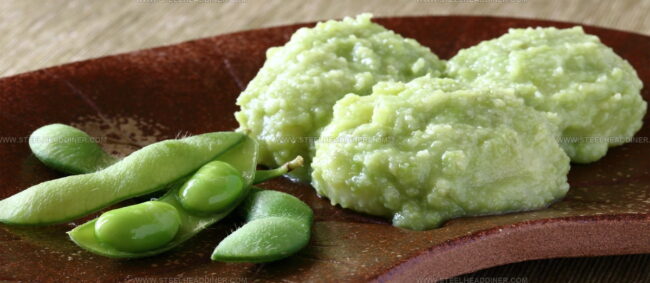
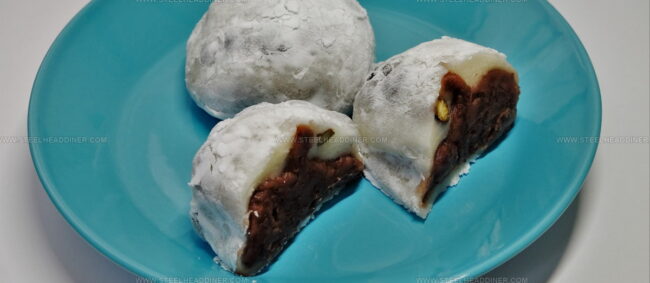


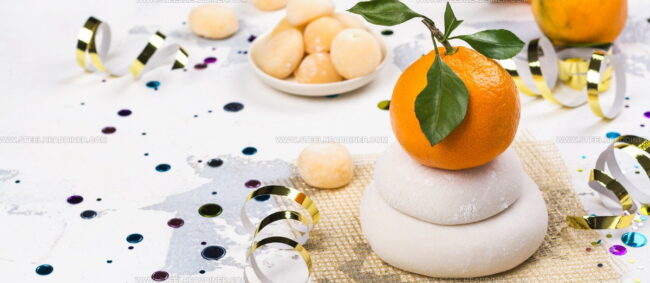

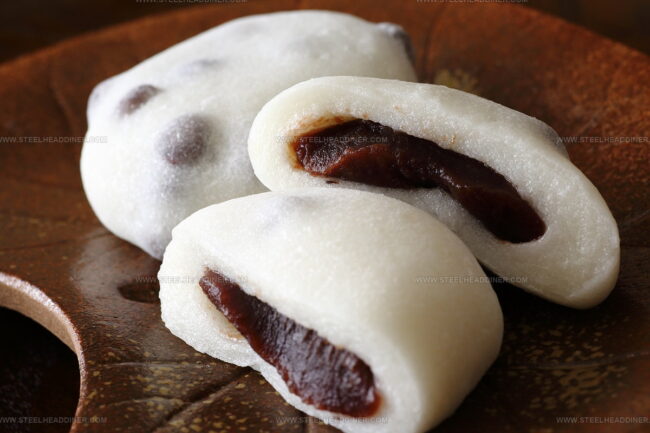
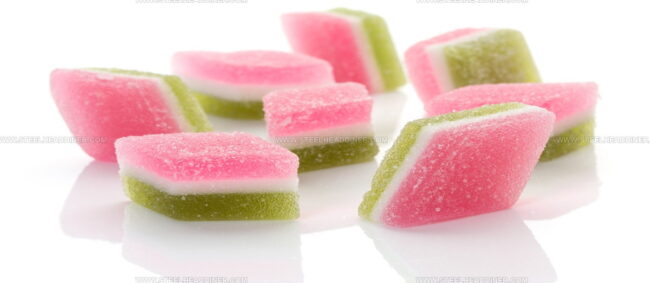
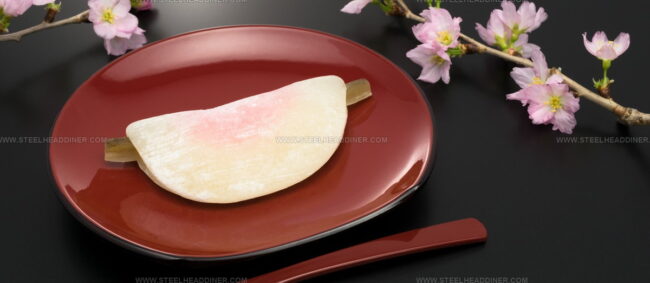
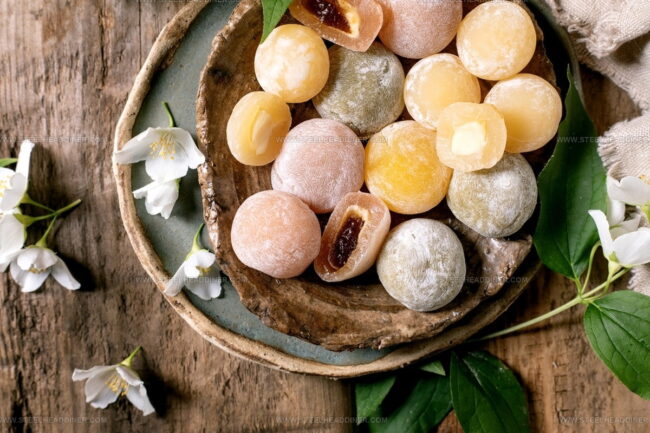
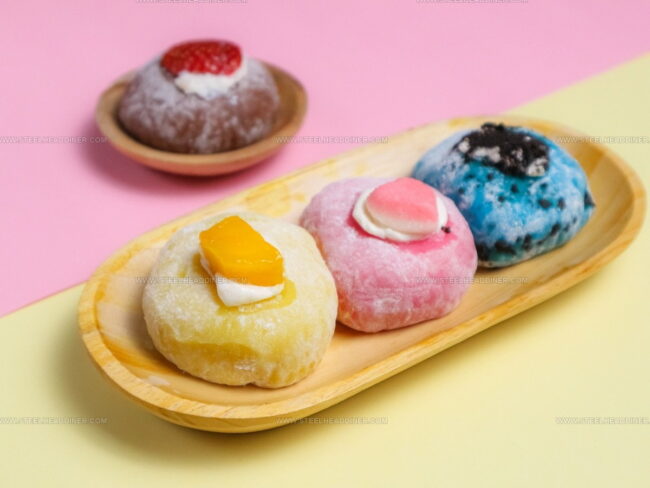
Jack Monroe
Founder & Recipe Innovator
Expertise
Pacific Northwest cuisine, Single-serving recipe development, Sustainable sourcing and cooking, Modern comfort food
Education
Brightwater
Associate of Applied Science in Culinary Arts
Focus: Sustainable cooking, seasonal ingredients, and food systems education
Jack grew up with a fishing rod in one hand and a cast-iron skillet in the other. After graduating from Brightwater: A Center for the Study of Food, he set out to prove that cooking for one could still taste like a feast.
Jack believes that food should feel real: fresh, fearless, and a little wild, just like the rivers he grew up around. For Jack, every single dish is a small adventure, and the best ones are the ones you can cook with heart, not hassle.